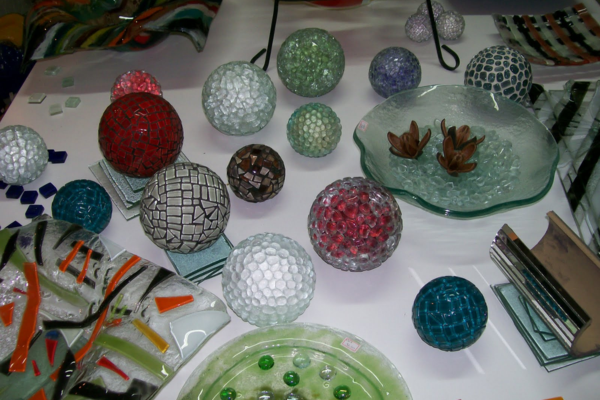Introduction
Glass, with its innate transparency and transformative qualities, has captivated artists for centuries. From ancient civilizations to contemporary artisans, the medium has been shaped and reshaped through a myriad of techniques, each contributing to its enduring allure. In this article, we delve into the fascinating world of glass art, exploring the techniques that artists employ to harness its transparency and facilitate its transformation into mesmerizing works of art.
Blowing and Sculpting:
Among the most iconic techniques in glass art is glass blowing. Dating back to the 1st century BC, this method involves heating glass until it reaches a molten state, then shaping it using various tools and molds. The artist blows air into a molten glass blob through a blowpipe, creating vessels, sculptures, and intricate forms. Sculpting, on the other hand, entails manipulating solid glass using tools like diamond saws and grinders to carve intricate details and shapes.
Fusing and Slumping:
Fusing involves melting together multiple pieces of glass in a kiln at high temperatures, bonding them into a single, cohesive piece. This technique allows artists to create layered compositions, incorporating elements like colors, textures, and patterns. Slumping, a related process, involves heating glass until it becomes soft and pliable, then shaping it over molds to create curved or textured surfaces.
Stained Glass:
Stained glass artistry has adorned cathedrals, mosques, and temples for centuries, utilizing colored glass pieces arranged within lead came channels to form intricate designs and images. Artists employ techniques such as painting, etching, and staining to achieve desired effects, resulting in vibrant and luminous windows that tell stories and evoke emotions.
Glass Casting:
Glass casting involves pouring molten glass into molds, allowing it to cool and solidify into a desired shape. Artists can use various types of molds, including clay, plaster, and metal, to create objects ranging from small sculptures to large-scale installations. This technique offers endless possibilities for experimentation, from exploring texture and form to incorporating other materials like metals and ceramics.
Lampworking and Beadmaking:
Lampworking, also known as flameworking, involves melting glass rods or tubes using a torch or lamp, then shaping the molten glass into beads, figurines, and small sculptures. This precise technique requires meticulous control and dexterity, as artists manipulate the glass using specialized tools and techniques. Beadmaking, a subset of lampworking, focuses specifically on creating intricate glass beads for jewelry and decorative purposes.
Coldworking:
Coldworking encompasses a range of techniques performed on glass once it has cooled to room temperature. This includes processes such as cutting, grinding, polishing, and engraving, which allow artists to refine and enhance the appearance of their glass creations. Coldworking can be used to create intricate patterns, smooth surfaces, and precise edges, adding depth and dimension to the finished piece.
Conclusion
glass art offers a rich tapestry of techniques for artists to explore, each offering its own unique challenges and rewards. Whether blowing molten glass into delicate forms, fusing layers of colored glass into vibrant compositions, or meticulously shaping glass beads under the flame, artisans continue to push the boundaries of what is possible with this captivating medium. Through transparency and transformation, glass art continues to inspire awe and wonder, inviting viewers to contemplate the interplay of light, color, and form in these remarkable creations.
As we continue to explore and celebrate the wonders of glass art, let us not only marvel at the skill and creativity of the artists who bring these visions to life but also recognize the power of art to inspire, uplift, and unite us in our shared journey of discovery. In a world that often feels fragmented and divided, the transparency and transformation of glass art remind us of our common humanity and the boundless possibilities that arise when we embrace creativity, curiosity, and connection.




